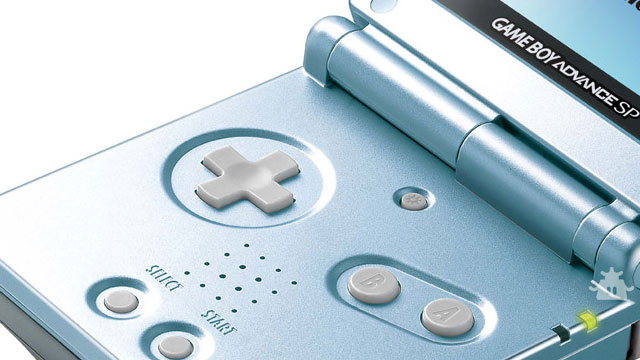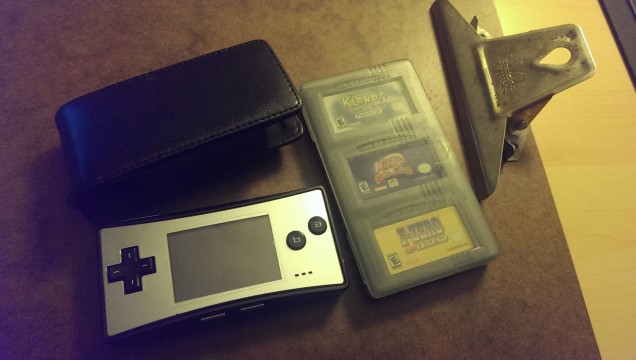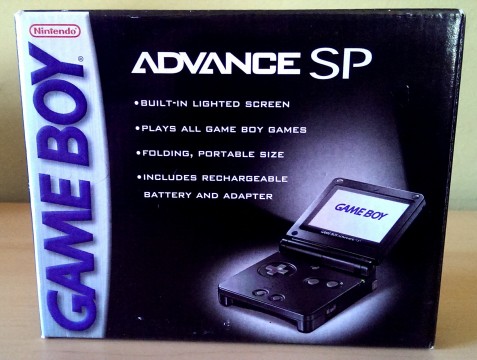
Game Boy Advance represents an interesting period in Nintendo’s history. While notable for being vastly more powerful than its predecessor Game Boy Color, GBA is also known for seemingly having as many ports in its library as it did original titles. For some, games like Drill Dozer, WarioWare, and Mario vs. Donkey Kong can only make up so much for the glut of rehashes that found their way to the memorable handheld. This hemming and hawing tends to distract from the fact that regardless of the freshness of the software, GBA was home to some truly incredible games, not to mention was pretty special just as a piece of hardware. So let’s stop and take a look back at the last Game Boy, and how Nintendo could learn a thing or two from its past!
As the third true evolution of the Game Boy line of portable consoles (okay, maybe the fourth if someone wants to argue Game Boy Pocket warrants a notch!), GBA was something of a revelation when it hit the market. Though the bulk of titles released for the handheld could have passed for SNES titles, the system actually boasted a 32-bit processor. Indeed, when it first began promoting GBA to game developers, Nintendo showcased a tech demo of the Nintendo 64 title Yoshi’s Story running on the portable console; no small feat, and a testament to GBA’s power. Though Yoshi’s Story never saw the light of day on GBA beyond that demo, fans were still nonetheless stunned at the games that did get released.
With today’s HD smartphones producing nearly home console-level imagery, it’s probably hard for some folks to understand how taking around SNES games in a person’s pocket could be all that thrilling. Remember, though, that GBA came out during a time when people were happy if their cellphone (note: not smartphone) had a colored screen! There was a good stretch of time prior to Apple’s iPhone when the video game industry’s various handheld systems were the definition of bleeding edge portable hardware; I can vividly remember family members and even people on the street being amazed at things like my Game Boy Advance, Nintendo DS, and PlayStation Portable, because they were so advanced compared to the devices in their daily lives. It wasn’t until the aforementioned iPhone dropped that relatives and passersby stopped being as curious about my portable gaming systems. Just to hammer the point home a little further, the cycle of video game companies like Nintendo and Sony simply shrinking the previous generation of home consoles to pocket size continues to thrill fans (hello 3DS and PlayStation Vita!). It was no different in 2001.

- Coincidentally (for real!), I just pulled my Micro out to play this past weekend!
It wasn’t just the graphics that got fans in a tizzy, though. The form factor of GBA was also something to appreciate. Orienting the buttons into what was ostensibly a landscape version of the original Game Boy hardware, wider was officially better. The addition of shoulder buttons also meant that developers were able to incorporate more elaborate control schemes, as well as adapt a broader variety of games and series from other genres and platforms to the new portable. When Nintendo redesigned GBA and released Game Boy Advance SP to the market in its place, however, the line really hit its stride. The landscape layout was jettisoned for a compact clamshell design, a lit screen, and a rechargeable battery. Honestly, it’s no exaggeration to say that GBA SP became part of the vanguard of personal electronic devices the second it hit store shelves. (I personally love the Game Boy Micro just a smidge better, myself, but I digress). Nintendo itself has been building each subsequent hanheld from it in one form or another ever since. The very things that had proven to be Achilles heels to its competition were finally mastered by Nintendo, and there was an undeniable sense at the time that handheld gaming had started to grow up.
No system is worth the plastic and circuits it’s comprised of if it doesn’t have good games to play, and GBA had plenty of them. In the early 2000s, 3D was still the Kate Spade of video game high fashion. 2D was largely “slumming” it on handhelds, because developers and publishers firmly believed that the old style of gaming had no place on home consoles. As a result, a variety of titles were released on GBA that never would have had a chance anywhere else. The number of original series and games that bowed on the handheld is considerably larger than a lot of people might think. The WarioWare, Golden Sun, Mario vs. Donkey Kong, and Mario and Luigi series were all born on GBA. Western players were finally introduced to Fire Emblem and Advance Wars on the handheld. There were also some notable one-off titles, like Drill Dozer (from Game Freak, a rare Pocket Monsters departure) and DK: King of Swing. Wario Land 4 continued the tradition of excellence that series was known for, and would go on to become a benchmark of 2D game design. And let’s not forget the wonderful original Pokemon, Metroid, and Kirby games that graced GBA, as well.
As noted above, being the sanctuary of 2D gaming meant GBA saw titles that wouldn’t have even been entertained on GameCube, let alone PlayStation 2 or Xbox. Konami’s highly-touted Castlevania: Symphony of the Night saw three spiritual successors on GBA: Castelvania: Circle of the Moon, Harmony of Dissonance, and Aria of Sorrow. The trio of titles were incredible, and fans likely would never have played any of them if not for Nintendo’s portable. Other series like Namco’s Klonoa, SquareEnix’s Final Fantasy Tactics, and SNK Playmore’s Metal Slug all saw original installments on GBA, as well. Though GameCube’s Sonic Adventure 2: Battle was the first appearance of Sonic on a Nintendo console, the GBA trilogy of Sonic Advance games are easily some of the best titles the beleaguered blue hedgehog has appeared in over the past fifteen years.

The main gripe against GBA remains its plethora of ports, but there are a number of reasons why that’s more a straw man argument than anything else. First, look at the caliber of some of those ports: Final Fantasy IV, Final Fantasy VI, The Legend of Zelda: A Link to the Past, the Donkey Kong Country trilogy, and more. Some games, like the original Super Mario Bros. trilogy (bearing the Super Mario Advance moniker), saw significant enhancements to their presentation, as well. Those games might not be the best example (said enhancements were introduced in Super Mario All-Stars, which managed to pack all those games on one cartridge! And let’s not talk about how… chatty Super Mario Advance is!), but my point stands; there might have been a lot of halfhearted releases like Contra Advance, but there were also quite a few Final Fight One‘s, as well.
This was also at a time when things like Virtual Console didn’t exist, and outside of internet whizzes of the day running emulators on their computers, playing classic titles meant having the old systems and games laying around. Suffice to say, not everyone has the means or interest in holding on to every gaming console they’ve ever owned, which made GBA’s rerelease tendencies more of a boon than a curse. Many of these reissues were invaluable ways for fans to experience titles they might have missed the first time. A good (though overpriced) example of this was the Classic NES Series, which brought games like The Legend of Zelda, Super Mario Bros., Excitebike, and more to GBA. The origins of Virtual Console can arguably be traced right back to this system.
When I look back on GBA, I personally lament how it was essentially the end of simplicity for video games. I’m not begrudging Wii U for being able to connect me to untold multitudes of people across the world to play Mario Kart 8, or whining that I can stream Daredevil on Netflix through the thing. These are all advancements that I embrace and have an appreciation for. That said, I do remember a time when I could take a game, throw it into a console, hit power… and play. There’s something comforting and fun about systems like GBA, where all a player had to do was grab a handful of games, throw them in a backpack or purse, and they were good to go. No worrying about WiFi, no homepage or dashboard, no memory storage space woes, none of that; just pure, unfettered gaming. Admittedly, the average person nowadays is much more tech savvy than someone from ten, even fifteen years ago was, so it’s not like a PS4 being able to do a million different things is turning new gamers away in droves, but I still miss the accessibility of classic gaming systems.
Nintendo seems to understand this in some ways, for better or worse. Wii U and 3DS certainly offer an array of features well beyond anything that GameCube or GBA ever did. Yet, when compared to the competition coming from Sony and Microsoft, there’s no denying that there’s a gap between them and what Nintendo offers from its hardware. I know it drives some fans nuts seeing Nintendo lag behind when it comes to implementing features that Sony and Microsoft players have been taking for granted for years, but I’ve personally taken a measure of solace in seeing the unflinching focus on the games themselves that the company brings to the table. What’s wrong with a video game console just being, well, a video game console? So many pundits keep saying dedicated gaming handhelds are at death’s door because of the smartphone, but with millions upon millions of 3DSes and Vitas in consumers hands, it’s pretty obvious that there are a number of people who just want to play games. Ultimately, that’s what was at the core of GBA. GBA was all about playing games, and that’s why so many people have a special place in their hearts for the system to this day.
Make sure to head to Wii U’s eShop to check out all the GBA games available on that system’s Virtual Console service! And let us know in the comments which GBA games are your favorites, or special memories you have of the system.




 ShareThis
ShareThis






